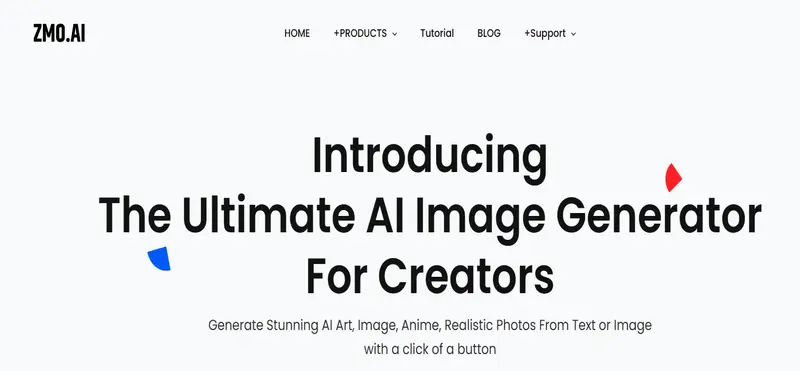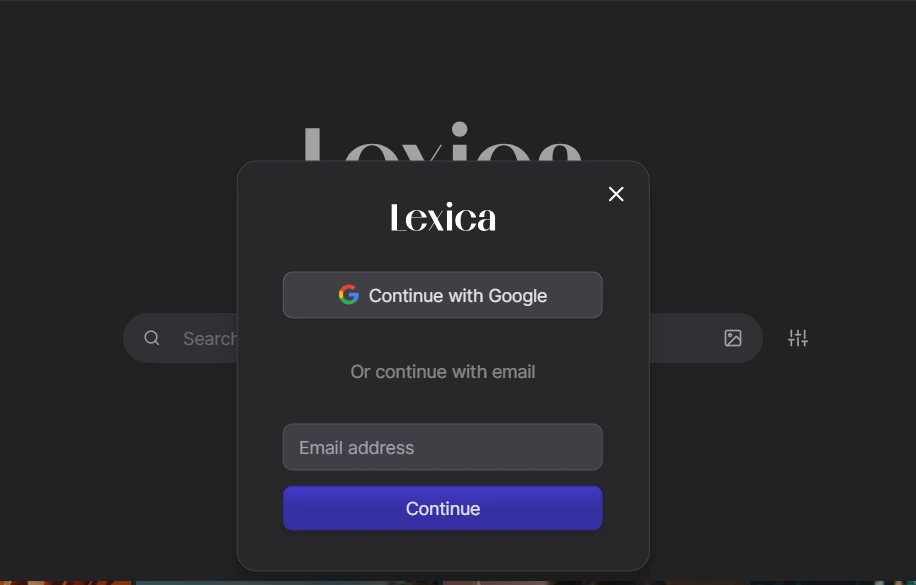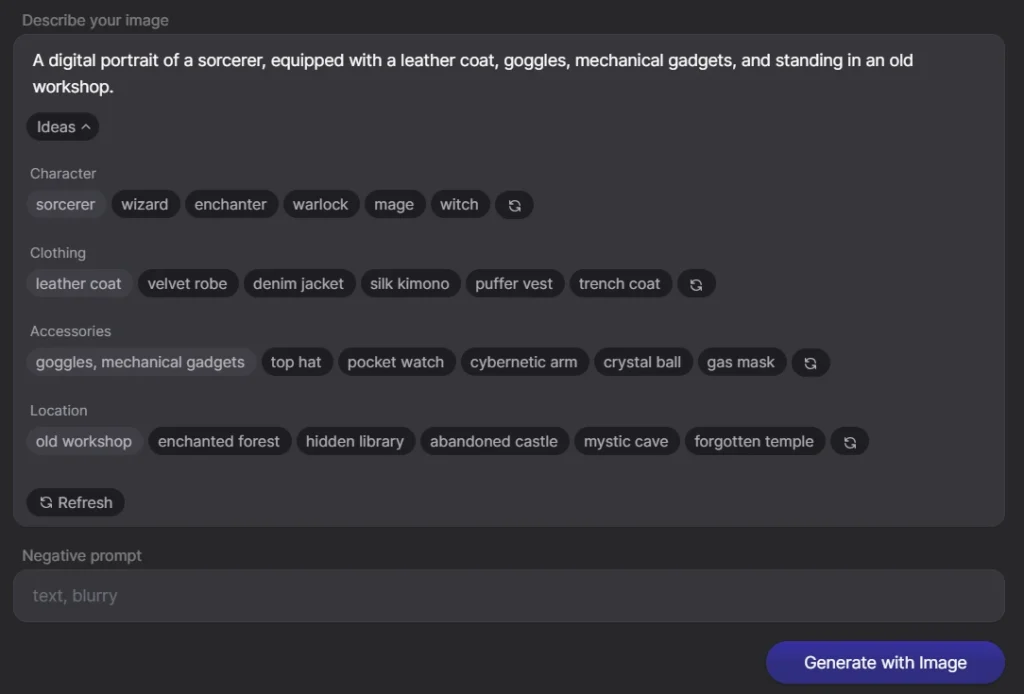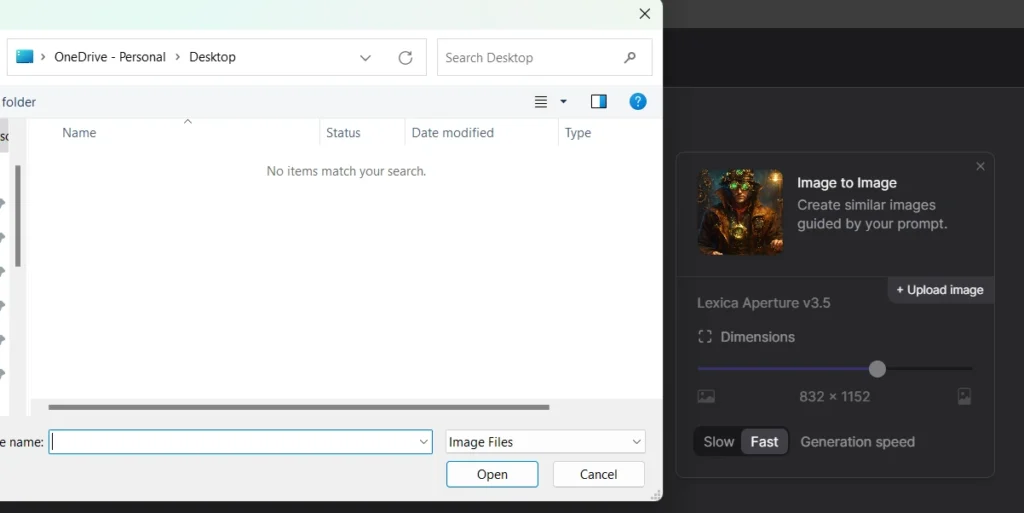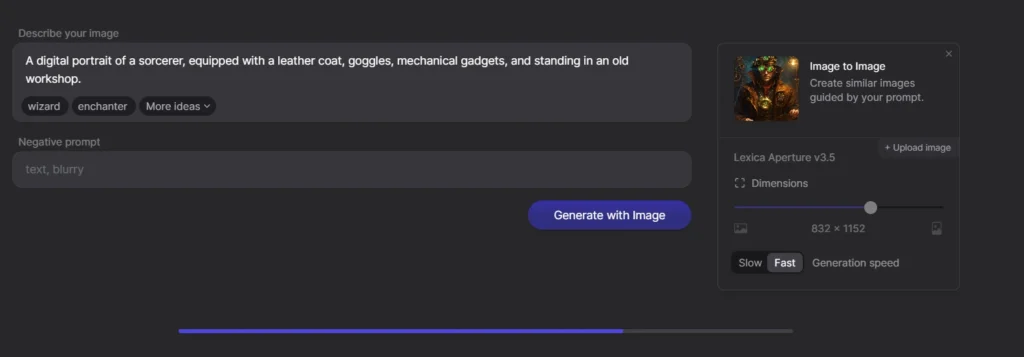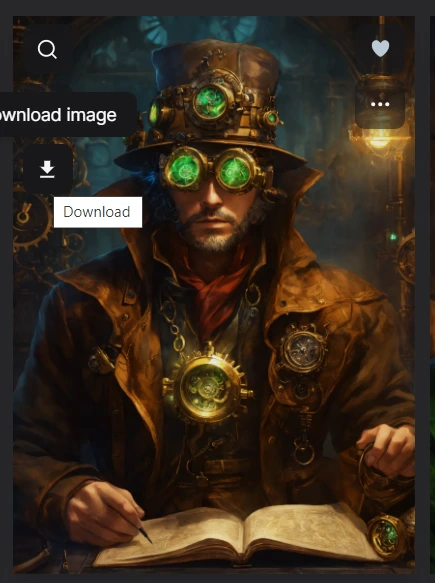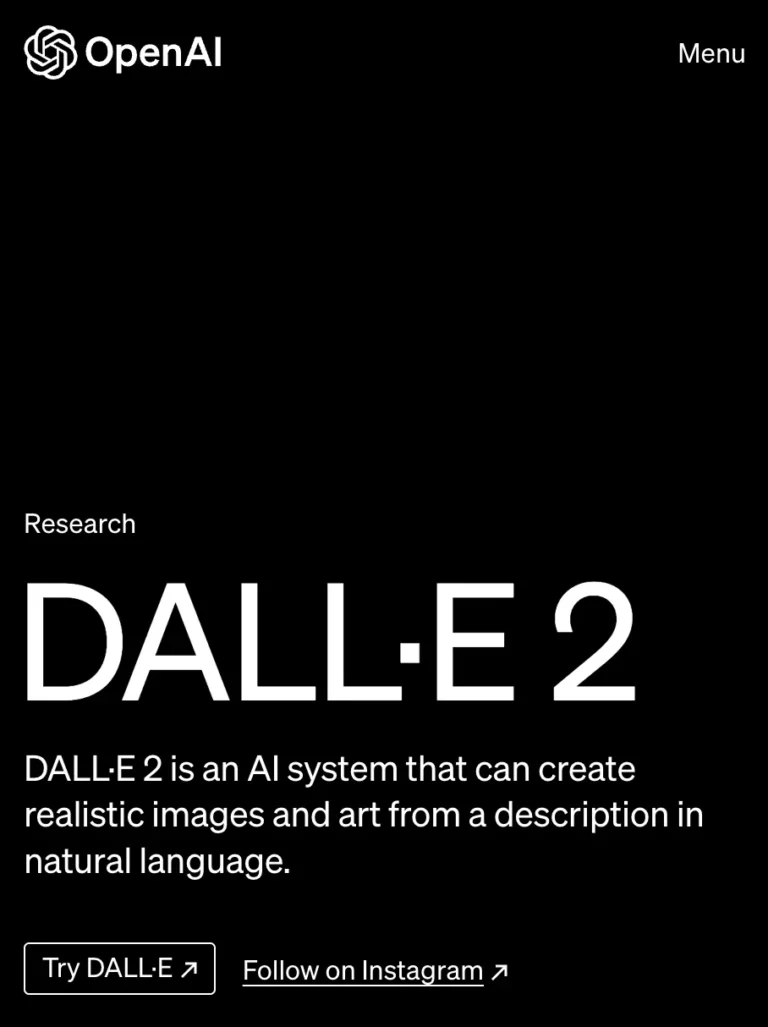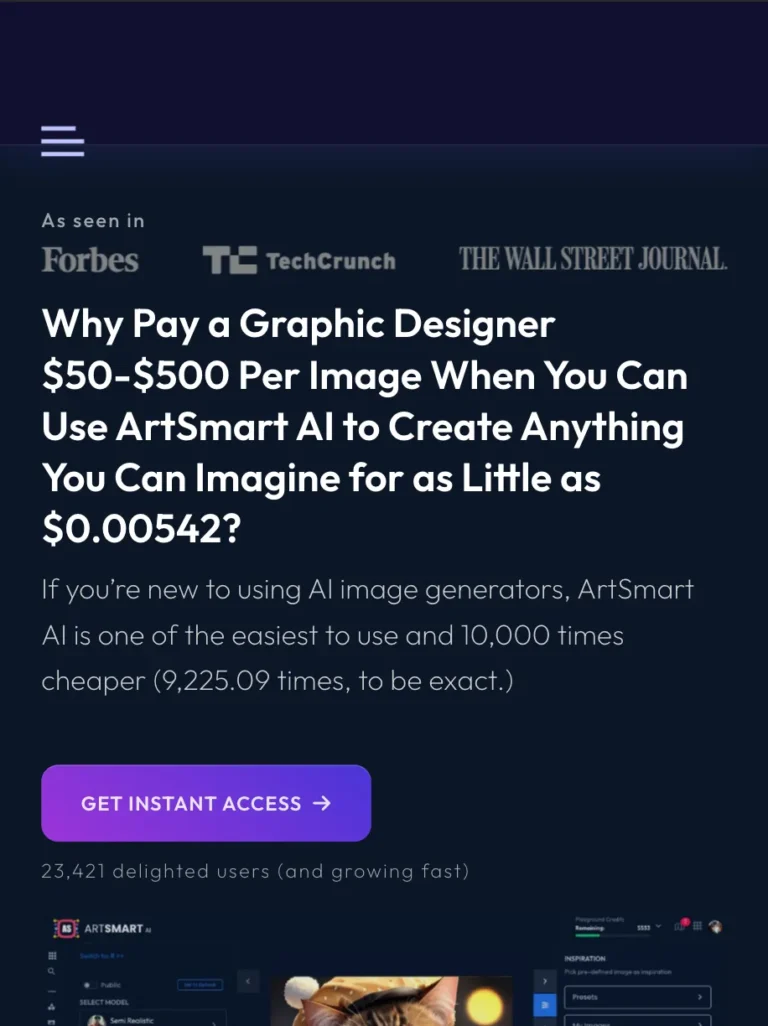ImgCreator.AI: Transform Text To Images with AI
-
By shahin
- Updated on
With the fusion of technology and creativity, the domain of Digital Art and Image Generation has emerged as a dynamic and expansive field. This domain is replete with advanced tools and groundbreaking algorithms that are transforming the way artists and enthusiasts design and create. These tools, powered by artificial intelligence, offer capabilities far beyond traditional artistic methods. Be it generating novel visuals, constructing interactive installations, or delivering immersive experiences – the possibilities seem endless. The influence of this disruptive technology can be seen across the spectrum from algorithmic paintings to generative designs.
The potential users of these advanced tools span across various professions and industries. Digital Artists and Graphic Designers are leveraging these tools to craft unique pieces and enhance their design processes with generative elements. Game Developers are integrating these tools to create dynamic and adaptive in-game visuals.
In the movie industry, Filmmakers are integrating AI capabilities for special effects and visual storytelling. Advertising Agencies resort to these tools to design compelling and personalized campaigns, while Virtual Reality Creators are deploying AI-driven tools for developing immersive VR experiences.
Additionally, Architects are utilizing generative design technology for advanced architectural visualization. It not just stops here but extends to Interactive Media Developers who employ these tools to construct engaging interactive installations.
In the educational realm, Institutions are growing increasingly interested in exploring AI-driven creativity in the curriculum. Furthermore, various Innovative Startups are pioneering unique applications within the expansive landscape of Digital Art and Image Generation.
In essence, the domain of Digital Art and Image Generation is an ever-evolving fusion of artistic ingenuity and artificial intelligence, promising to redefine the creative and artistic process as we know it.
Summary and Use Cases
Lexica is a state-of-the-art tool that is redefining the realms of digital art and image generation. The true essence of Lexica lies in its powerful algorithms and creative intelligence. By employing advanced neural networks, Lexica masterfully transforms textual inputs into impressive works of art, offering a unique blend of language and imagery.
The tool has extensive use:
- Generative Art: Artists can use Lexica to turn their written content into algorithmically generated visual compositions, opening up a whole new avenue for creative expression.
- Interactive Installations: Lexica, serving as the backbone of interactive exhibits, engages viewers by dynamically converting their text inputs into immersive visual displays.
- Visual Storytelling: Lexica amplifies the impact of storytelling with automated visual elements creation based on narrative content.
- Content Visualization: Lexica offers a refreshing approach to content consumption by turning textual inputs, from poetry to prose, into captivating visual representations.
- Digital Marketing Creatives: Marketers seeking to take their digital marketing campaigns up the ante can use Lexica to develop AI-generated visuals that strongly resonate with their target groups.
- Adaptive Game Graphics: Game developers can take advantage of Lexica to create dynamic and adaptive graphics that smartly respond to in-game events and situation changes.
- AI-Driven Virtual Reality (VR): Those creating VR experiences can use Lexica to translate written scenarios into rich, interactive virtual experiences.
- Educational Visual Aids: Educators can use Lexica to turn their learning materials into engaging and visually stimulating resources, enhancing comprehension and learner’s engagement.
Lexica stands out as a revolutionary tool in digital art. It forms a bridge between language and imagery, opening up infinite possibilities for creative expression and enhanced communication. Users looking for an exciting blend of art and technology will surely appreciate Lexica’s dynamic capabilities and features.
Feature List
Lexica’s diverse array of features are designed with the goal to transform text into captivating generative art. Its core functionality translates text using an array of neural networks and models such as Aperture v3.5. The process is rendered seamless, allowing users to unleash their creativity with visually stunning and unique artworks.
- In terms of inspiration and reference sourcing, Lexica provides wonderful support in the form of its Community Image Search feature. Users have access to a vast repository of images which can help steer their creative projects in new and exciting directions.
- The variety of AI models on offer in Lexica, including Aperture v3.5 and more, gives artists room to play with different styles. This helps ensure each artist finds the model that is just right for their unique creative vision.
- To further enable artistic experimentation, Lexica offers the Style Exploration feature. Users can dive into a world of diverse visual aesthetics, discovering a synthesis that best helps them express their individuality in art.
- Further options for creative customisation come in the form of Lexica’s Image Editor feature. Artists can add their personal touch with adjustments, color correction, filters and more, ensuring each artwork is a reflection of their unique artistic taste.
- Premium users have an added advantage with the access to Premium Style Packs. These exclusive and curated selections of styles add to the repertoire of artistic possibilities, enabling creations of the highest uniqueness and quality.
- The Advanced Text-to-Image Translation feature goes a step beyond, translating not just the text but the nuances and emotions contained within. The result is a visually compelling, emotionally resonating piece of art.
- Users also have the power to influence the art creation process through the Interactive Image Generation feature. The AI responds to real-time user feedback, providing for a dynamic, collaborative approach to artistic expression.
- Lexica invites all users to join its Creative Collaboration Hub. This is where artists can connect, exchange ideas, draw inspiration from each other, and nurture a vibrant ecosystem of artistic collaboration.
- Finally, once their art is ready to share, users have the support of the Export and Integration feature. Artists can export their work from Lexica and integrate them on other platforms, making it simple to publish and showcase their creations. All in all, Lexica’s rich feature set is designed to cater to the unique needs and aspirations of every digital artist.
Account Creation Process
Initial Setup Difficulty
The initial setup of the platform is impressively straightforward, thanks to its user-friendly sign-in process and seamless Google apps integration. This simplicity ensures a hassle-free getting started phase, allowing users to navigate through the application with ease.
Nevertheless, it’s important to note that accessing all of the features necessitates a purchase. While this might be a potential setback for some, the array of tools and capabilities available renders it a worthwhile expenditure. Particularly for artists in search of a rich, intuitive platform, the investment promises a streamlined and enhanced creative experience. Despite the upfront cost, the long-term returns in terms of productivity and ease of use make this platform a compelling option for users across the board.
First Impressions
The first impact upon interacting with the product was satisfactory. It offers a search feature for finished images, facilitating idea generation for new users. Moreover, the user interface is clear and uncluttered, which enhances the navigation experience. This introductory experience paves the way for an easy-to-use and practical application that addresses the user’s needs. Despite being a brief interaction, it made a noteworthy first impression.
Creative Process: How to use Lexica
Step 1 – Uploading Input Images: The first step in creating an AI output involves uploading the input images. This platform offers a wealth of freedom in terms of supported formats, allowing you to express your creativity fully. Opting for high-resolution images will result in the best-quality output.
Step 2 – Choosing Output Preferences: The next step in the procedure is determining your output preferences. This is where you select the type of AI generation you prefer, adjust your parameters, and define any special requirements for your output. Take time to play with diverse settings to hit the mark in achieving your creative objectives.
Step 3 – Initiating AI Processing: Moving on, the third step requires initiating the AI processing. The system is put to work to produce your output based on the preferences and input you’ve fed it at the press of the ‘Generate’ button. Judging from the variation in processing times due to the complexity of requests, exercising patience is necessary at this point.
Step 4 – Saving and Exporting: Finally, once content with the result, save your efforts within the platform. A variety of export options are also available based on your needs to deploy the AI output across different platforms. Continual saving of your progress is recommended to prevent any unforeseen loss of data.
Integration and Compatibility
Lexica successfully meets all criteria for compatibility, demonstrating versatility with various software and platforms. From its supportive documentation, one can discern the integration capabilities with PlugIns and APIs, suggesting a broad spectrum of user options particularly appealing to artists.
Using Lexica, users can seamlessly share their creations across various media channels, thanks to its impressive compatibility beyond the application itself. This powerful feature enables a more extensive canvas for creative expression. By considering these characteristics, Lexica genuinely outperforms expectations in terms of adaptability and integration, all while maintaining an effortless user experience.
Clarity and Detail Resolution
Score: 4
Lexica is a reliable choice for high-definition images, consistently maintaining clarity across different generations. The vibrancy of colors, contrast, and outlines are presented with a satisfying level of accuracy, ensuring a generally commendable visual experience.
However, upon a more detailed inspection, one may notice a slide in the resolution quality. When images are zoomed in, it’s apparent that the preservation of intricate elements isn’t as polished. This can result in a slight blurring effect, compromising the overall sharpness of the images.
For the general user who communely enjoys capturing and browsing images, this fault in preservation may not vastly affect the overall viewing experience. However, for more scrutinous or professional users, there’s a potential scope for improvement. Keeping in mind the high-definition display, Lexica might benefit from further fine-tuning their resolution capabilities, to ensure a seamless zoomed-in experience and superior attention to detail.
This, however, does not detract from the overall quality that Lexica offers. With its strong performance in delivering clear and well-defined images, it continues to hold its ground in a competitive market. Still, its middling score emphasizes the need for continued improvement in its detailing and resolution attributes to cater to a wider spectrum of user preferences.
Color Accuracy and Vibrancy
Score: 3
This impressive score reflects Lexica’s exceptional capabilities in terms of color accuracy and vibrancy, showcasing its proficiency in reproducing vibrant and true-to-life colors. Clearly leading the pack, this application goes above and beyond when it comes to delivering accurate and lively color representation, which is an essential element for those involved in artistic endeavors.
Color fidelity is often a crucial factor for creative individuals, and Lexica has demonstrated commendable performance in this aspect. As such, it is highly recommended for users seeking a tool capable of catering to specific color-related requirements. The vibrant and lifelike hues created by Lexica can truly elevate any artistic project setting this application apart from its competitors.
As an artist, graphic designer, or creative enthusiast, you would undoubtedly appreciate the vivid color palette and the exact color replication that Lexica offers. Its superior performance in delivering on point color representation makes it a powerful tool. This inherent strength of Lexica in color accuracy and vibrancy is indeed an exceptional merit that should certainly be taken into consideration by potential users.
Moreover, its exceptional capability in reproducing real-like and vibrant colors makes it a top choice for users who prioritize accurate color rendering. So, if color accuracy and vivacity are high on your list, Lexica could be the reliable tool you’ve been searching for.
Handling of Diverse Subject Matters
Score: 3
Lexica has proven itself to be an average performer in the realm of diverse subject matter handling. Its user-friendly design ensures the essential features for image enhancement are easy to find and apply, despite the simplicity of its setup. The capabilities of Lexica reside in its balanced approach, allowing users to navigate the program efficiently and utilize its features to improve their images’ detailing.
While it may not yet reach the level of sophistication found in specialized tools, Lexica still holds its own in the market. Whether you’re a fan of various artistic styles or a range of different subjects, you’ll find Lexica to be a reliable choice for your image enhancement needs. The tool seeks to provide a universally appealing function, making it a versatile solution for a multitude of artistic endeavors.
However, there is room for advancement. A score of 3 suggests that while Lexica’s performance is satisfactory, the tool could still evolve and refine its offerings to provide a more robust suite of features and improve user experience. Nonetheless, its overall satisfactory performance makes Lexica a sound choice for most users looking to enhance their artwork digitally.
Speed of Image Generation
Score: 3
The performance evaluation highlighted an impressive speed of image generation. Timed tests reveal rapid responsiveness with the demo prompt rendering the results in mere seconds. Such efficiency positions the device competitive on the market, boasting an above-average speed capacity. Exceptionally, its performance meets the professional requirements and exceeds user’s expectations for everyday use. The device’s ability to generate images so swiftly can significantly streamline workflows, facilitating users to manage their time more effectively and boost their productivity.
Handling of Complex Prompts
Score: 3
Lexica proves remarkable in its ability to manage complex prompts. This software makes navigating intricate prompts seem like a breeze, simplifying the process for the user. It offers a selection of additional features to aid in detailed image generation, enhancing the overall efficiency.
Striking a fine balance between speed and accuracy, Lexica provides a satisfying user experience for dealing with complex artistic demands. Without compromising on the precision, it ensures swift operations, proving to be a valuable tool in the hands of its users. This commendable performance, paired with user-friendliness, makes Lexica a notable choice in the market. Meanwhile, the software’s ability to handle complex tasks effortlessly only adds to the overall positive user experience.
Customization Options
Score: 1.8
Lexica provides a decent offering in the market when it comes to customization options. It gives users a moderate degree of control over several image aspects, including size, style, and composition making for a user-friendly image creation experience overall. However, there are areas where it falls short, like intricate detailing in its tools.
Though these limitations exist, Lexica’s overall functionality isn’t severely compromised. The tool maintains a quality performance in image generation outcomes, serving as a distinguishing feature. Lexica, thereby, could be a suitable option for users looking for a balance between ease-of-use and a modicum of customization in their image editing software. There is scope for improvements, yes, but even as it stands now, it shows promise.
To optimize its offerings further will only serve to strengthen Lexica’s foothold in the marketplace.
Pro & Cons of Lexica
Pro
- User-friendly Interface: Lexica is renowned for its user-friendly interface, making it easily accessible for both beginners and experienced users. Its intuitive design allows users to quickly understand its features.
- Operational Speed: The tool provides a good balance between speed and efficiency in image generation. While it may not be the fastest, it ensures a smooth and swift execution process.
- Google Apps Integration: Integration with Google Apps further enhances user experience. This feature enables quick and seamless setup, adding to the user’s convenience.
- Moderate Customization: Lexica supports moderate customization, permitting users to have creative control over various aspects of their images, hence increasing its versatility and flexible use.
- Vibrant Colors: The tool excels in delivering vibrant and accurately colored images, beneficial for artists who prioritize color-related needs in their work.
- Compatibility: Another pro includes its compatibility with other platforms, thereby facilitating easy sharing of images created on varied media platforms.
- Handling Complex Prompts: Lexica is adept at managing complex prompts, making it suitable for diverse artistic demands.
- Versatile: Lastly, Lexica can cater to a wide array of artistic styles and subjects due to its balanced approach, making it a versatile tool in any artist’s kit.
Cons
- Slow Image Generation: Users requiring faster image rendering may find the platform’s speed falling short of expectations.
- Challenges with Detailed Resolution: While the tool generally generates clear and distinct images, it falters when it comes to detailed resolution. Users may notice slight blurriness when zooming in for a closer look.
- Average Vibrancy: The vibrancy of the images produced is only satisfactory. There is scope for enhancement to create more impactful and visually dynamic outputs.
- Limited Export Formats: The platform has a restricted range of image export formats, which could pose a drawback for users requiring a variety of file types.
- Interface Enhancement Needed: Even though the interface is user-friendly, it may require minor updates to compete with the modern and streamlined looks of more up-to-date interfaces.
Pricing
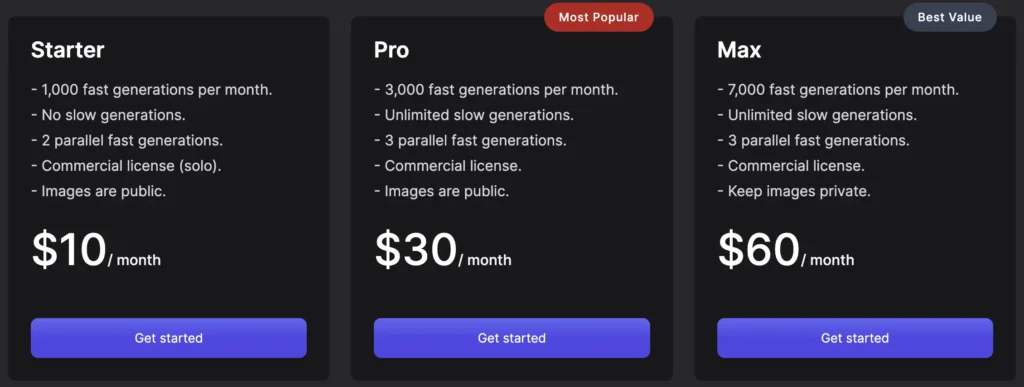
AIPR – Scoring
- Value for MoneyRated 3 out of 5
- Quality & AccuracyRated 3 out of 5
- FeaturesRated 3 out of 5
- Ease of UseRated 3 out of 5


